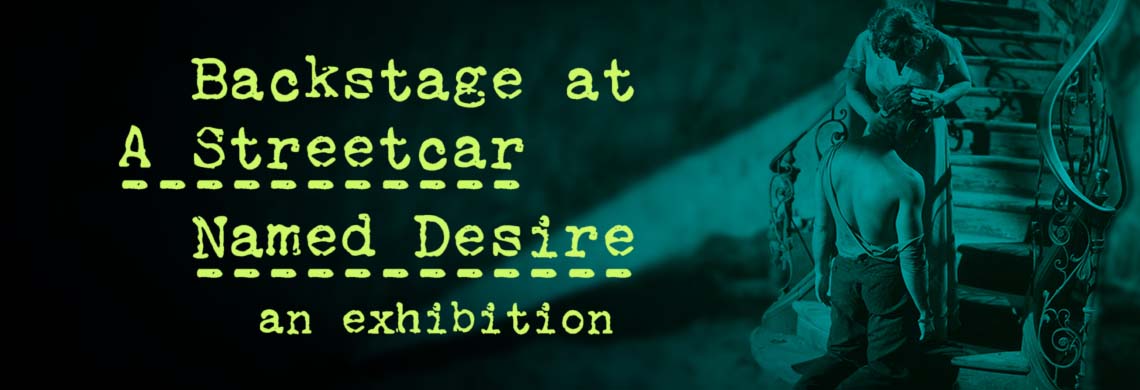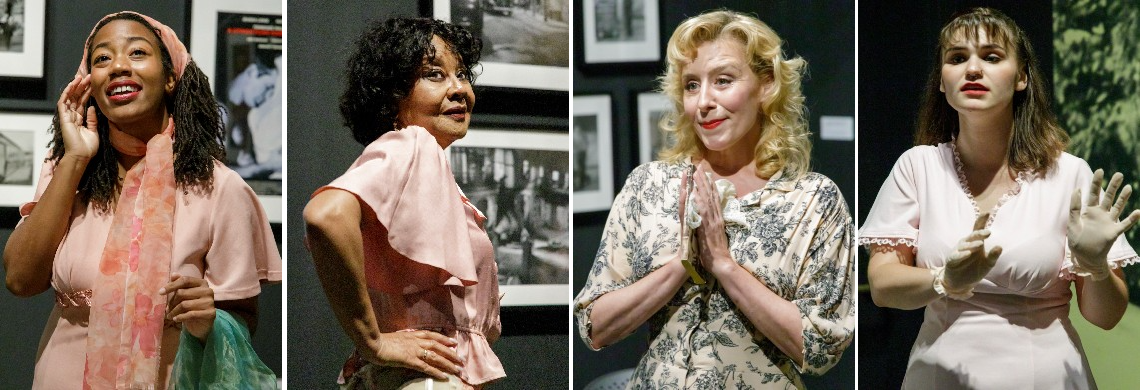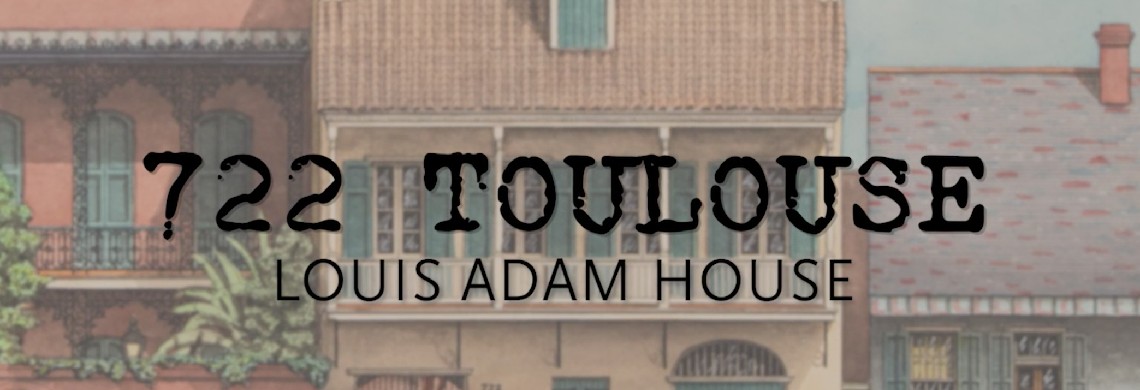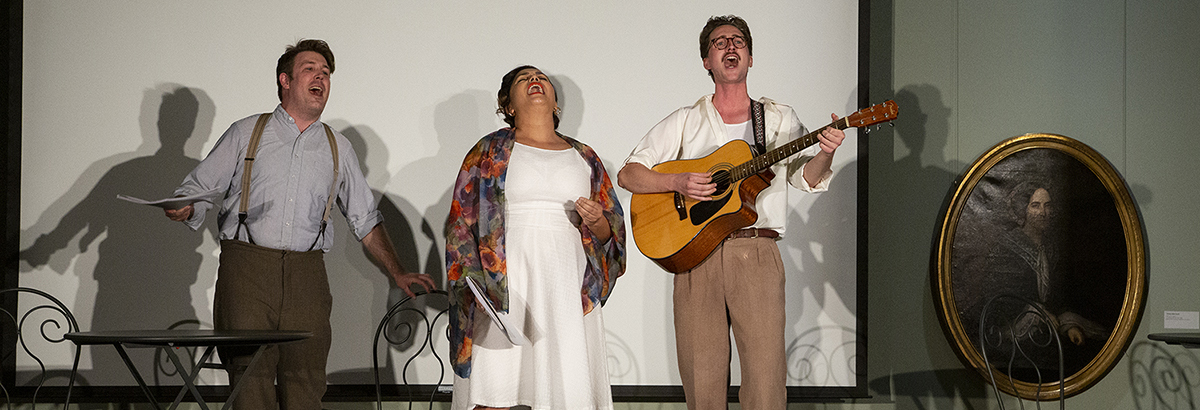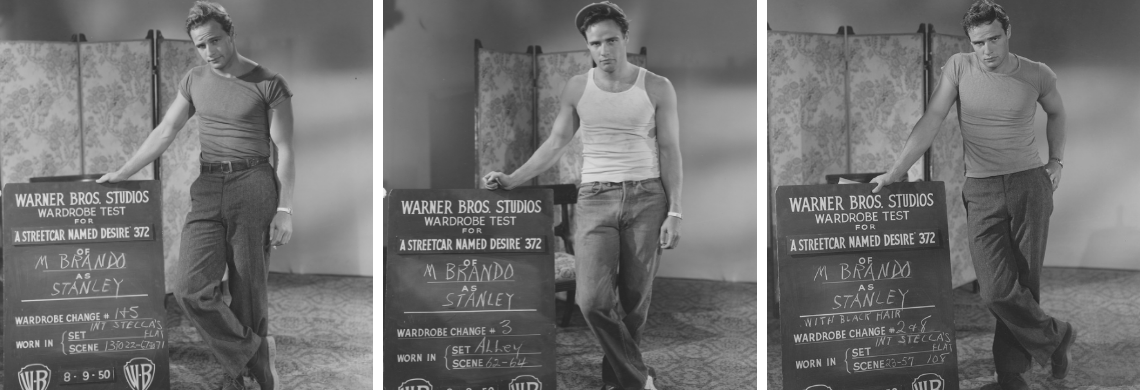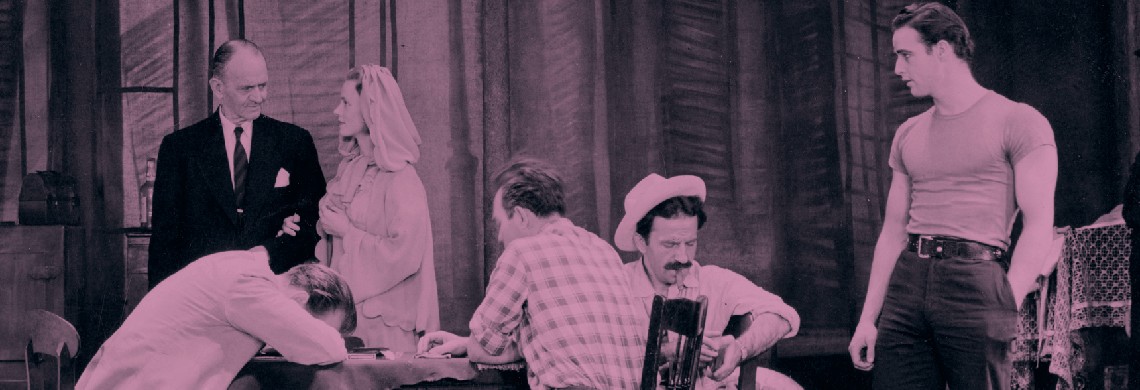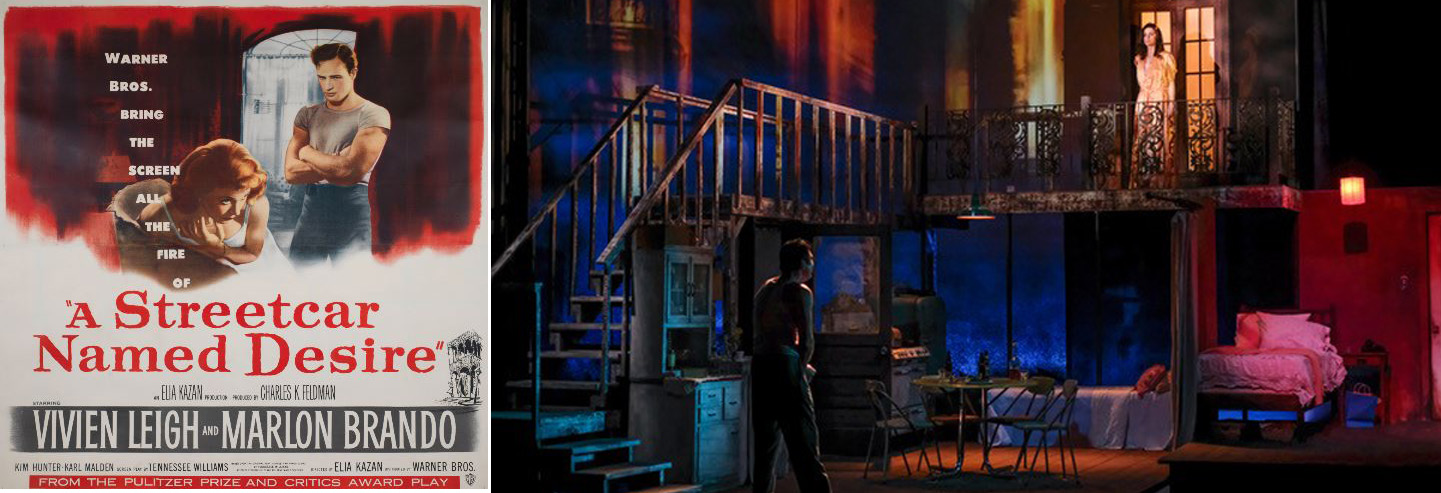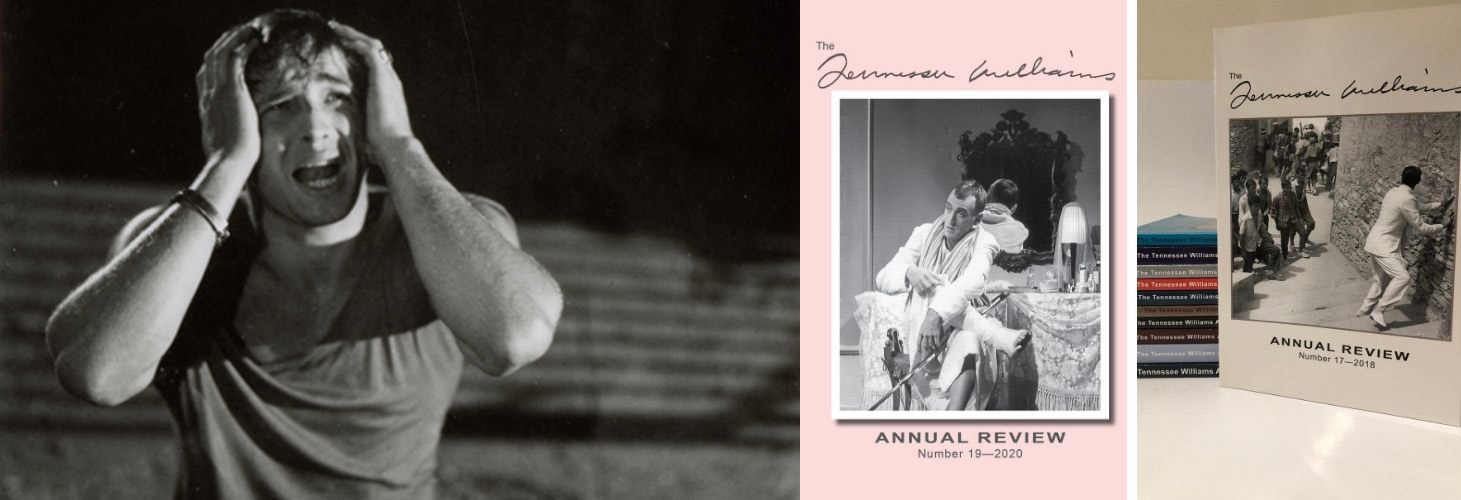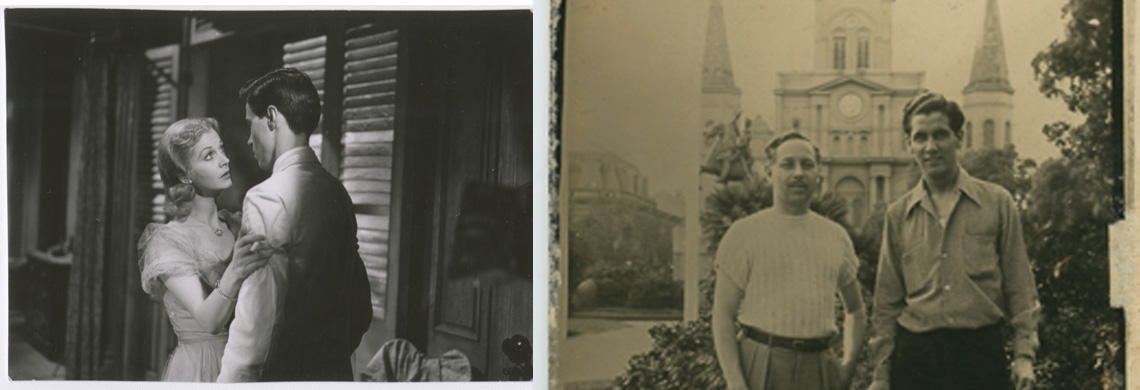Backstage at “A Streetcar Named Desire”
March 18–July 3, 2022
Tuesday–Saturday, 9:30 a.m.–4:30 p.m.; Sunday, 10:30 a.m.–4:30 p.m.
520 Royal Street, Tricentennial Wing, 1st Floor
Free ticketed admission
About the Exhibition
Seventy-five years ago this year, Tennessee Williams's A Streetcar Named Desire premiered on Broadway. The first performance received a seven-minute standing ovation, and the play has virtually never disappeared from the stage since. Williams's themes of societal upheaval, dislocation, and brutality versus gentility proved universal, as productions spread around the world, to nearly every continent. Backstage at "Streetcar" combines selections from THNOC’s wide-ranging Tennessee Williams holdings—many of them seldom displayed—with loans from the Harry Ransom Center, the Whitney Museum of American Art, the Victoria and Albert Museum, the New York Public Library, and Wesleyan University. Visitors can read director Elia Kazan's stage notes, listen to a rare recording of the original Broadway production, enjoy interpretations of the play in popular culture, and see photographs and ephemera from different productions around the world. Famous objects making the trip to New Orleans for the exhibition include Thomas Hart Benton's celebrated painting Poker Night and the Oscar statue awarded to Vivien Leigh for her performance as Blanche in the 1951 film.
Related Stories
An experimental theater production sheds new light on one of Tennessee Williams’s most beloved characters.
In a French Quarter attic apartment, 27-year-old Tennessee Williams worked on some of his earliest plays and came into his own as an artist. In this new video, THNOC takes viewers through the historic building, which the institution has owned since 1945.
The Tennessee Williams Scholars Conference makes a lively return to THNOC’s Williams Research Center for the the first time since 2019.
An iconic character's World War II service and its meaning to postwar audiences.
The new exhibition Backstage at “A Streetcar Named Desire” is a feast for Tennessee Williams lovers, exploring the play’s journey around the world onstage and onscreen.
The 1951 film of Tennessee Williams’s New Orleans-set A Streetcar Named Desire won multiple Academy Awards and is considered a landmark of American cinema. To prepare for the August 24, 2020, #NolaMovieNight group re-watch of the film, First Draft returned to local dialect coach and acting teacher Francine Segal for insight into the film’s accents (always of interest to New Orleanians) and acting styles.
To set the stage (as it were) for the August 24 #NolaMovieNight group screening of the 1951 film version of A Streetcar Named Desire, First Draft reached out to two Tennessee Williams Annual Review principals for insight into the publication and some thoughts on the film’s cultural impact.
The wide range of materials features objects such as the typewriter Williams used to write the play, early manuscript drafts, original playscripts, playbills, and photographs (including Vivien Leigh’s photograph collection from the shooting of the 1951 film version), as well as posters, lobby cards, first editions of published volumes, and foreign translations.

